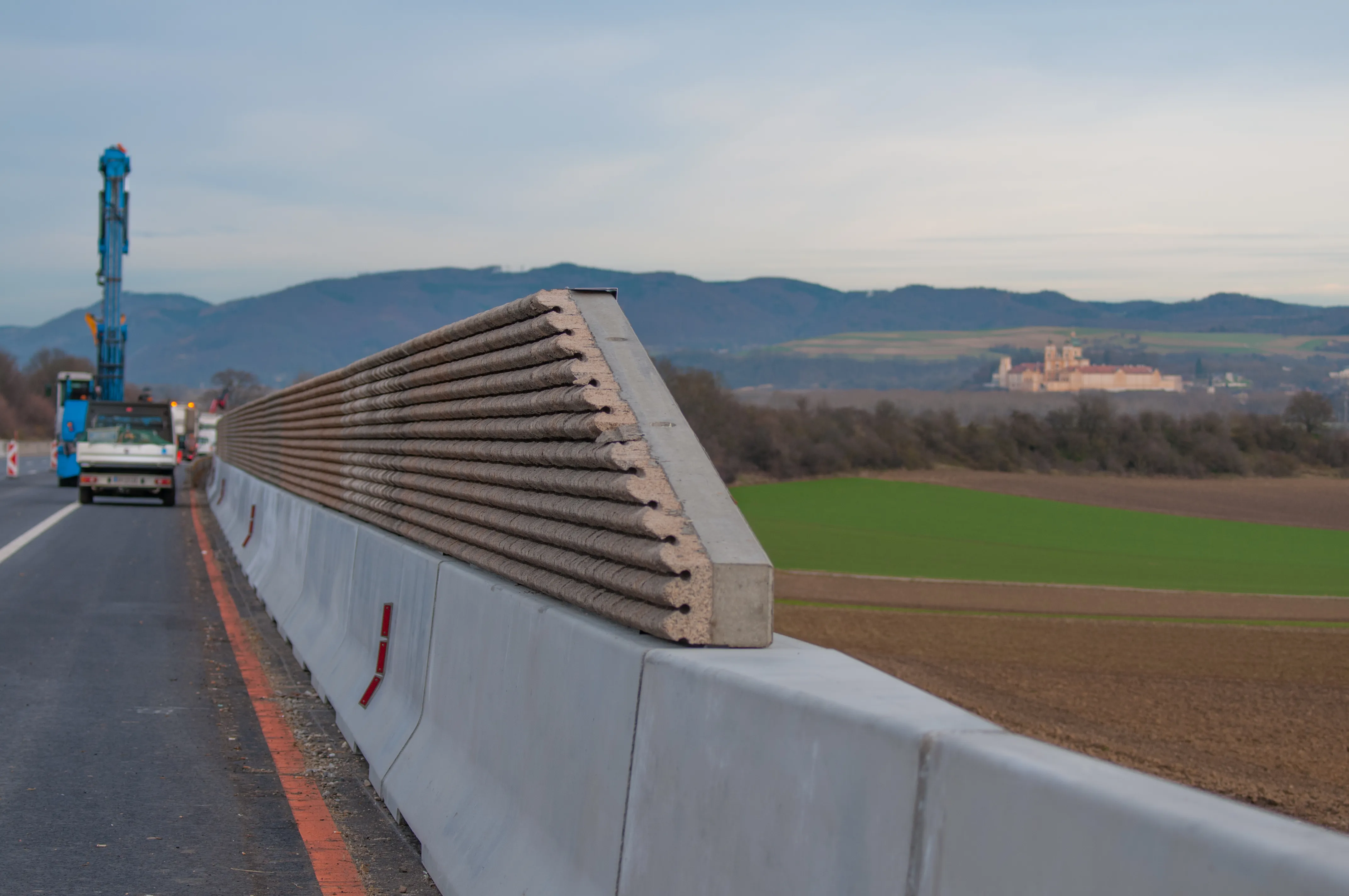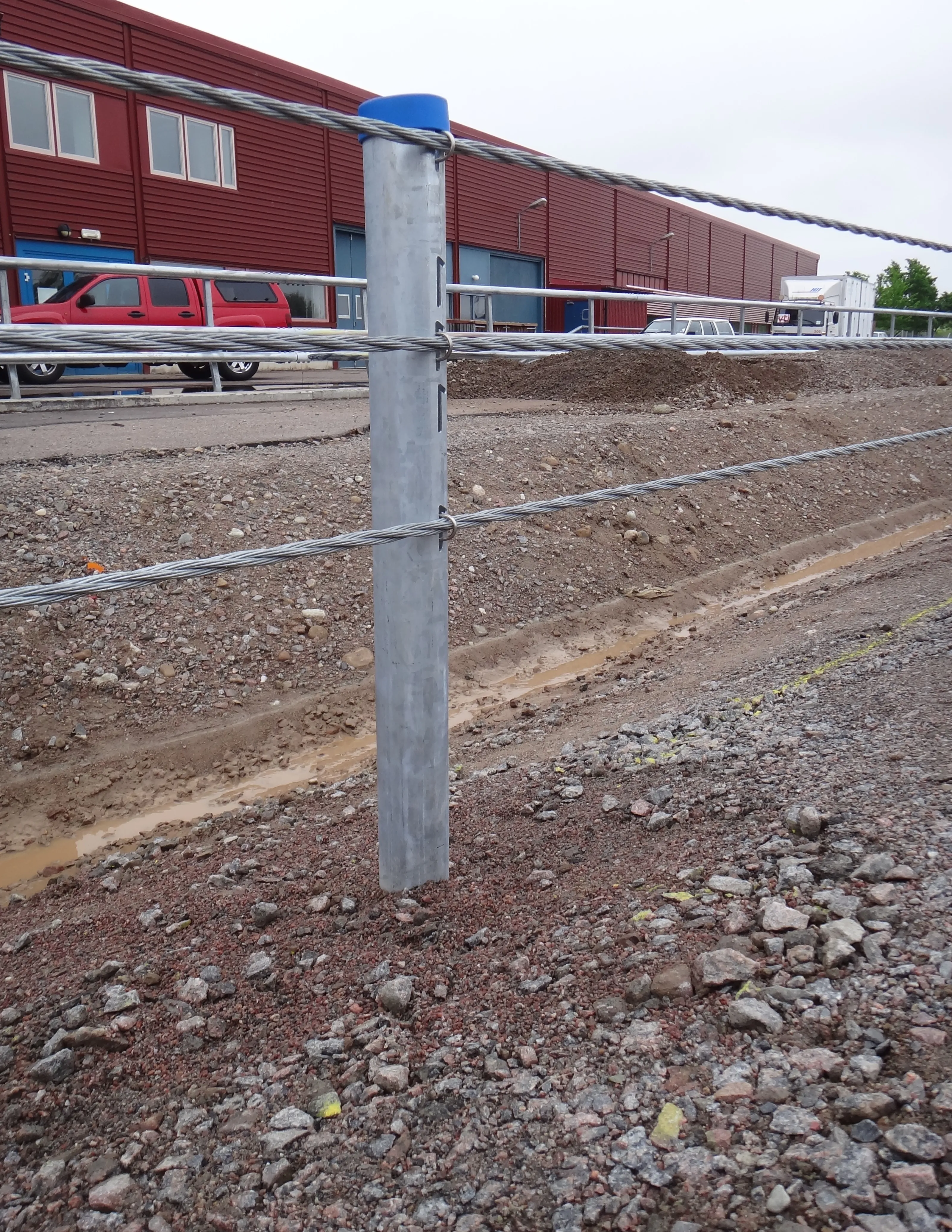
The main advantage of the noise barrier system is the combination of a vehicle restraint system as a concrete safety barrier with an integrated noise barrier. It features a space-saving slim design – the reason that it was chosen for installation in Estonia last autumn. There was not enough space for a conventional design including a regular guardrail and noise barrier.
Around 400m of single-sided noise barrier NB100/300_8_H2/W4 has been installed on motorway 4 – also known as the pan-European E67 - near Tallinn-Pärnu-Ikla. Project managers were particularly satisfied with the easy installation of the system and that construction was finished ahead of schedule, according to Rebloc.
The system features a modular construction consisting of a concrete base and a noise barrier panel that is inserted into the slotted recesses of two concrete elements providing a form-and-force locked connection.
A full-length continuous steel tension bar is integrated into the barrier elements and connects them with the integrated coupling to form a strong and continuous chain. The coupling system has no loose parts, which facilitates the installation and prevents unauthorised removal of pieces.
Due to the modular construction, the system can act as a temporary noise barrier.
Rebloc’s noise barrier is available as a one-sided system for use along the verge of the road as well as a double-sided system for the central reservation. The noise barrier can be customised to accommodate heights, containment levels and application-specific designs. Various materials and colours are available as sound absorption material.








